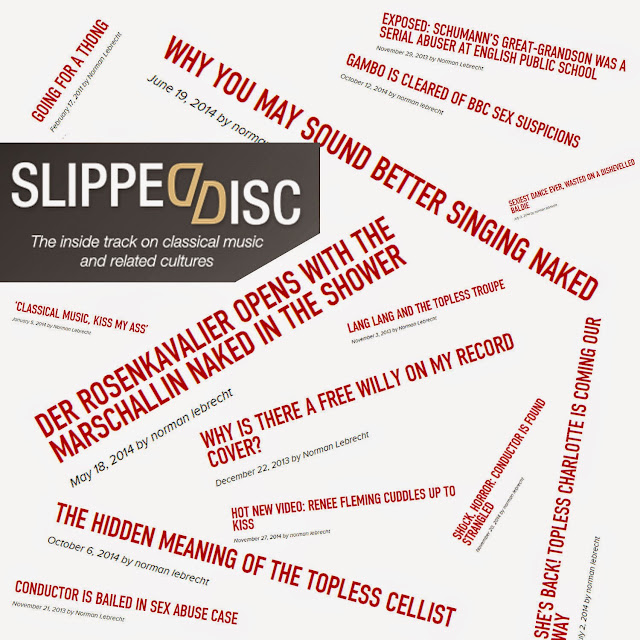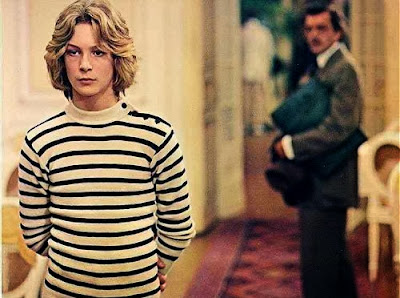David Munrow - Early Music's Pied Piper
 'David Munrow and the Early Music Consort of London transformed our view of medieval music. The impact of their performances far surparssed any that had gone before: by demonstrating how medieval music could sound normal, they created a niche for it in the concert hall and on record that it has never lost.' From Daniel Leech-Wilkinson's notes for Music of the Gothic era
'David Munrow and the Early Music Consort of London transformed our view of medieval music. The impact of their performances far surparssed any that had gone before: by demonstrating how medieval music could sound normal, they created a niche for it in the concert hall and on record that it has never lost.' From Daniel Leech-Wilkinson's notes for Music of the Gothic era2006 bring the thirtieth anniversary of the death of David Munrow. His contribution to the acceptance, understanding and performance of early music almost defies summary. He was born in 1942, and learnt the bassoon and recorder as a child. Between school and university he travelled and taught in South America , and started the collection of ethnic instruments that were to give him, and the world, a new perspective on early music making. He read English at Pembroke College, Cambridge, and was encouraged by Thurston Dart to take an active role in the music-making of that most musical of cities. It was at Cambridge that he started giving his unique combination of lectures and recitals on woodwind instruments that set him on a career as an evangeliser and performer of early music.
 In 1966 he joined the wind band of the Royal Shakespeare Company and performed incidental music for the Bard's plays in Stratford and London. Shortly after he formed the Early Music Consort, an ensemble that was to challenge and change the performance style of early music. Among the original members of the consort were James Bowman and Christopher Hogwood (photo above).
In 1966 he joined the wind band of the Royal Shakespeare Company and performed incidental music for the Bard's plays in Stratford and London. Shortly after he formed the Early Music Consort, an ensemble that was to challenge and change the performance style of early music. Among the original members of the consort were James Bowman and Christopher Hogwood (photo above).Munrow is best known for bringing little known medieval and Renaissance music to a wide audience. But his activities were not confined to concerts and recordings. He used early instruments in the film and television scores which he composed, including The Six Wives of Henry VIII, A Man for All Seasons, and The Devils (with Peter Maxwell Davies). He also worked with folk musicians including Dolly Cousins and The Young Tradition. And he was actively involved in new music, among the first performances he gave were Elisabeth Lutyens' The Tears of Night (1972), and Peter Dickinson's Translations (1971) and Recorder Music for recorder Player and Tape (1973). He was a natural communicator, his BBC Radio 3 programme the Pied Piper was broadcast four times a week for five years and introduced a huge audience to the riches of early music, and he also devised and presented the TV series Ancestral Voices.
David Munrow's recorded legacy is considered so important that one of his recordings was included on the Voyager space craft's 'golden disc' that was sent to Mars a year after his death. The following is a brief guide to three 'essential' recordings, all of which are available in the UK for around just £10 ($18) for each double CD. No serious music collection should be without them.
* The Art of Courtly Love - a collection of French secular music from Guillaume de Machaut to Guillaume Dufay. Although the time span is little more than a hundred years it covers one of the most astonishingly rich and varied periods in medieval music, including not only the development of polyphonic song, but also the summit of the song writer's art. Recorded by EMI in Studio 1 Abbey Road in late 1972 and early 1973 this is relatively early Munrow, and the musicians include Early Music Consort founders James Bowman, James Tyler and Christopher Hogwood.
* The Art of the Netherlands - a collection of early Renaissance secular and sacred vocal music. When this recording was made by EMI in 1975 many of the Flemish composers on it, including Brumel, Josquin, Ockeghem and Obrecht were unfamiliar to listeners. Now thanks to Munrow's
 pioneering work they are well represented both in the catalogue and in live performance. The first CD is devoted to secular songs, while the second is made up of Mass movements and motets. The singers include Sally Dunkley who went on to perform with the Tallis Scholars, The Sixteen and the William Byrd Choir. To purists Munrow's presentation of 'bleeding chunks' of Renaissance masses may appear anachronistic, but this is wonderful music presented with commitment and inspiration. The variety is a strength not a weakness, and the result is a persuasive overview of the music of this period. As well as being an important recording in its own right this budget priced two CD set is an invaluable 'sampler' for anyone wanting an introduction to Renaissance polyphony.
pioneering work they are well represented both in the catalogue and in live performance. The first CD is devoted to secular songs, while the second is made up of Mass movements and motets. The singers include Sally Dunkley who went on to perform with the Tallis Scholars, The Sixteen and the William Byrd Choir. To purists Munrow's presentation of 'bleeding chunks' of Renaissance masses may appear anachronistic, but this is wonderful music presented with commitment and inspiration. The variety is a strength not a weakness, and the result is a persuasive overview of the music of this period. As well as being an important recording in its own right this budget priced two CD set is an invaluable 'sampler' for anyone wanting an introduction to Renaissance polyphony.* Music of the Gothic Era is a remarkable survey of vocal music from the 12th to 15th century, progressing from the Notre Dame School, through Ars Antiuqa to Ars Nova. The composers include Léonin, Pérotin, and Machaut, and the singers include James Bowman and Roger Covey-Crump. Music of the Gothic Era was made in 1975,predating by thirteen years the Hilliard
 Ensemble's recording of Pérotin on ECM, a recording which used two of the same singers. Munrow's performance was pioneering in every way, and it pointed to a new direction with a revised consort exploring sacred repertoire, which alas he did not live to realise. Some of the realisations may be out of step with today's concepts of 'authentic performance', but Munrow's scholarship, vision, enthusiasm and sheer exuberance result in compelling music-making that it is still outstanding in every way after thirty years.
Ensemble's recording of Pérotin on ECM, a recording which used two of the same singers. Munrow's performance was pioneering in every way, and it pointed to a new direction with a revised consort exploring sacred repertoire, which alas he did not live to realise. Some of the realisations may be out of step with today's concepts of 'authentic performance', but Munrow's scholarship, vision, enthusiasm and sheer exuberance result in compelling music-making that it is still outstanding in every way after thirty years. The Archiv division of Deutsche Grammophon recorded Music of the Gothic Era in the Chapel of Charter House School. David Munrow no longer had an exclusive EMI contract. Like Herbert von Karajan, who was also an EMI artist at that time, he signed contracts with both Deutsche Grammophon and EMI to maximise his commercial leverage. Munrow was ambitious, but he never lost his sheer enthusiasm and exuberant delight in music making. His irrepressible personality and talent meant he was now a media figure, and a career as a conductor and broadcaster outside the early music world was predicted.
But it was not to be. David Munrow completed the sessions for Music of the Gothic Era in October 1975 and followed it by recording the LP Monteverdi's Contemporaries for EMI in November 1975. These were his last recordings. He took his own life on 15th May 1976, aged thirty- three.
Other David Munrow resources On An Overgrown Path include:
* David Munrow and the Voyager golden record
* Exclusive - a little piece of recording history,
* Monteverdi in Cambridge
Image credits: Header - Castle Classics, Early Music Consort - Musicteachers.co.uk, The Art of the Netherlands - www.amazon.com , recording session - Nigelnorth.net
Report broken links, missing images and other errors to - overgrownpath at hotmail dot co dot uk. Image owners - if you do not want your picture used in this article please contact me and it will be replaced.








Comments